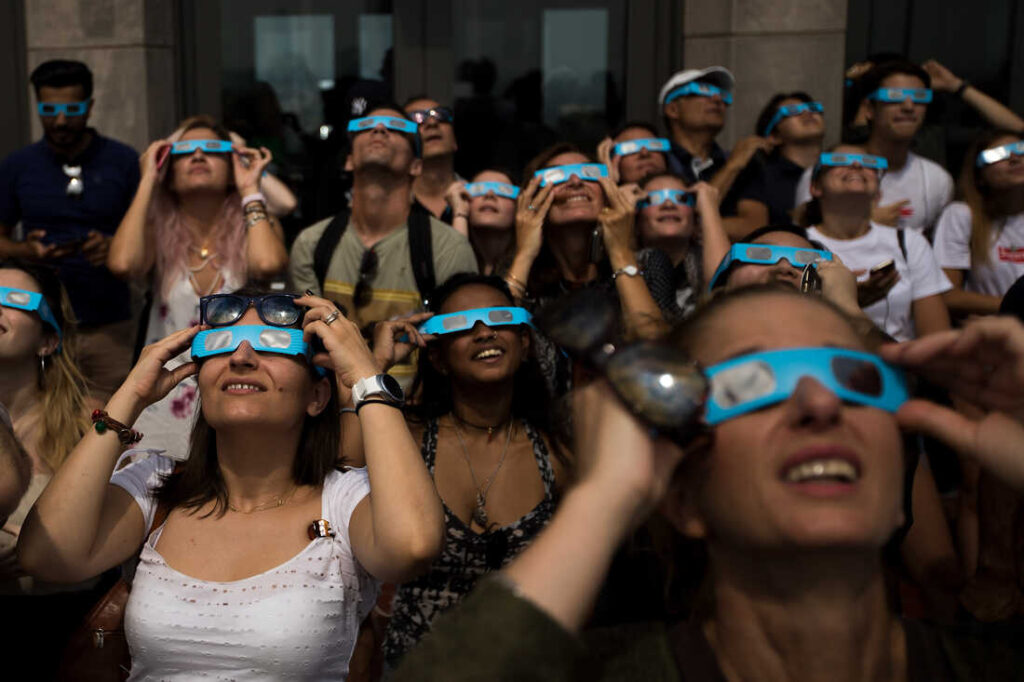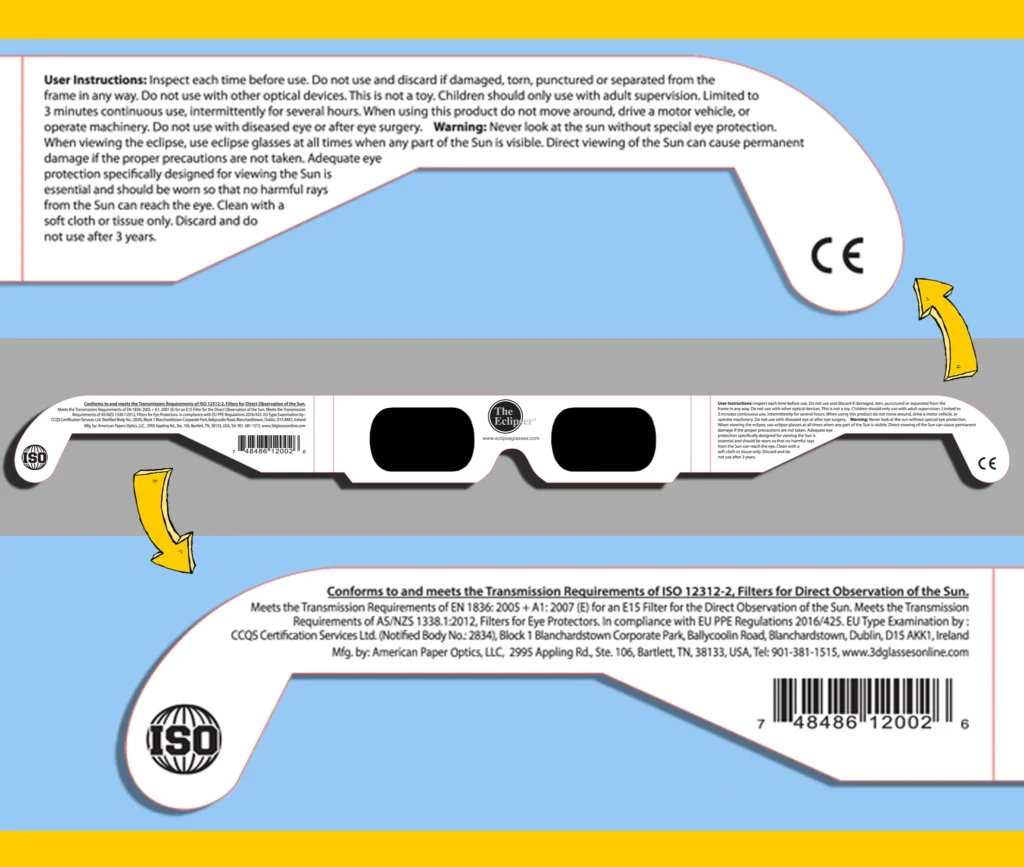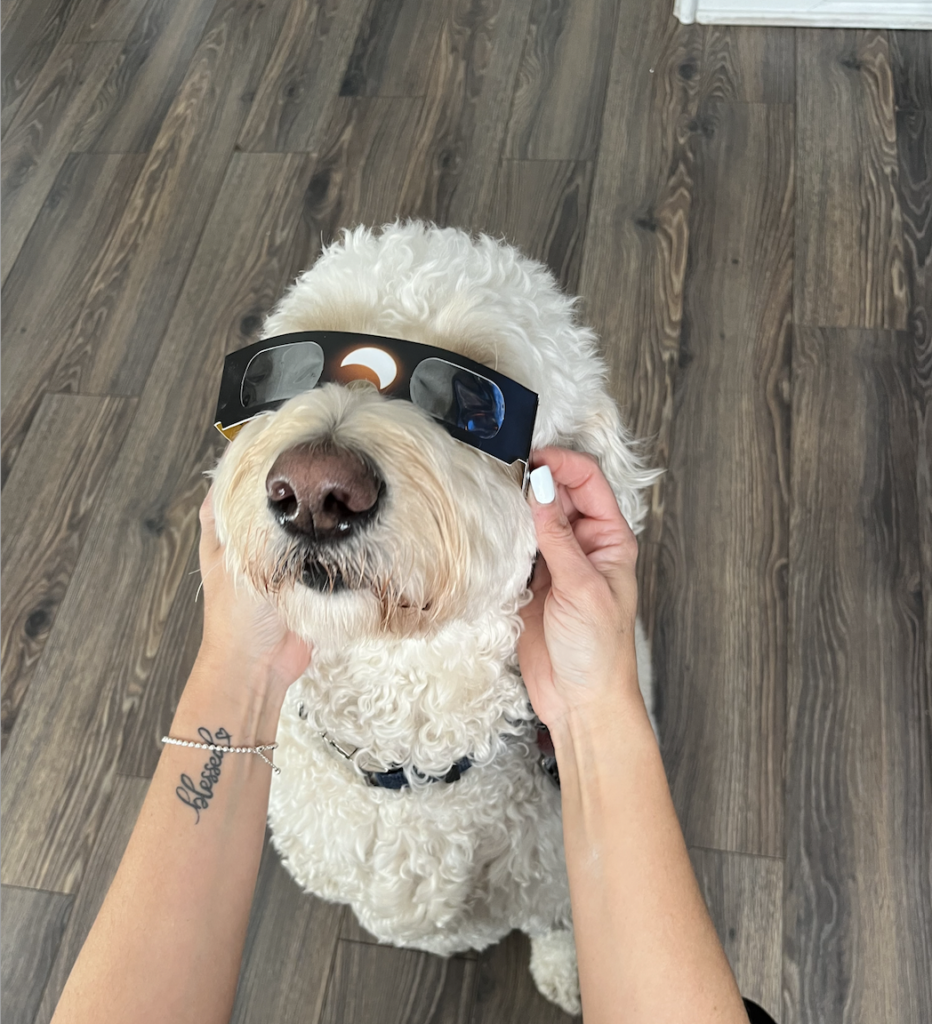Without proper protection, eyes can be damaged. The sun’s strong rays can damage cells in the retina at the back of the eye. The retina lacks pain receptors, so there is no way to feel the damage while it occurs.
Why are eclipses potentially dangerous?
The answer is simple. During a partial eclipse, the eyes become more vulnerable to UV radiation from the sun, which can enter the retinal tissues and burn the retina. These damaging rays can enter more easily because the pupil dilates in darker situations, which occurs when you wear polarized sunglasses. It can cause the burning of important cells called macula, which are responsible for our fundamentally clear vision. Polarized sunglasses and lenses are the only way to appreciate the beauty of a partial eclipse. When it comes to total eclipses, you can only remove your glasses during totality because the moon has covered the sun, reducing the intensity and amount of UV radiation.

What are glasses made out of and what is the difference between regular sunglasses and eclipse ones
Eclipse glasses and sunglasses may appear the same, yet they are built from completely different materials. Never look directly at the sun while wearing sunglasses, regardless of how tinted the lenses are.
Sunglasses are typically composed of glass, plastic, or some type of polycarbonate material, whereas sun filters are constructed of one of two materials: polyester film coated in aluminum or something called ‘black polymer’. Most eclipse glasses and sun viewers employ black polymer, a flexible resin impregnated with carbon particles. Both types of filters lower visible light to acceptable levels.
How to properly check your glasses.
According to the American Astronomical Society, a genuine and safe pair of solar eclipse glasses should be branded with ISO 12312-2 (often spelled in more detail as ISO 12312-2:2015).Fake glasses may also be labeled as ISO 12312-2 compliant because, in general, individuals could be dishonest, and untrustworthy. To double-check the authenticity of your eclipse glasses’ ISO claims, look into whether the retailer from where you acquired the shades is AAS-trustworthy.
The AAS proposes that you look at sunlight reflected off a mirror or a shining metal object. If the sun is behind clouds or on the opposite side of the planet when you want to test your glasses, use a bright-white LED, such as your phone’s flashlight, or a bare lightbulb. Reflected sunlight or brilliant, white artificial light should appear very dim with a safe pair of eclipse glasses. If you can see light behind a lamp shade or a soft, frosted light bulb through your eclipse glasses, you know they’re not strong enough to safely look at the sun.


How to protect your pets at home!!
Experts reassure pet owners that animals do not naturally stare at the sun, so even if they are outside, they will most likely be alright; nevertheless, if you are concerned that they will look up by accident, keep them indoors to reduce the risk.
You can also take further measures to limit pets’ stress and exposure to the sun by closing curtains or placing cat climbing poles or other items away from windows during the eclipse.
Experts suggest that signs of stress in dogs include panting, pacing, and changes in facial expressions, such as eyes bulging to reveal whites. They advise pet owners to spot these indications early on, and if you do, remove your animal from the stressor and calm them in the best way you know how.
My experience:
I enjoyed watching the solar eclipse. I was with some friends outside of school, and it was an incredible experience. To be honest, I didn’t have any reason to attend and watch it because I’d never been interested in that type of thing, but I’m so glad I did because it was a lot of fun! Back at home with my dog, my mother closed all of the blinds and did not allow him to go outdoors to protect his eyesight.